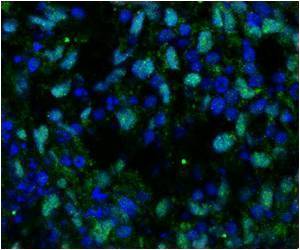Aging of the section of the bone marrow where hematopoietic stem cells are formed are found to cause aging of these stem cells.
- Aging of the section of the bone marrow responsible for producing hematopoietic stem cells results in the aging of these cells.
- This is found to increase the risk of poor immunity as well as the risk for certain types of blood cancer.
- Rejuvenating the section of the bone marrow is suggested to be a potential form of therapy to improve vitality of stem cells.
- Younger hematopoietic stem cells which result in healthier blood cells
- Increased immunity among older people
- A more potent defense response against some types of blood cancer
Bone Marrow Aging
The research team was involved in numerous experiments to identify a method to determine blood cell development as well as the vitality of the cells that were present in the microenvironment of the bone marrow. One of the experiments that were conducted involved the development of the endosteum stroma cells that give rise to a thin layer of connective tissue present on the interior side of the bones. The levels of proteins that were associated with specific cells in the bone marrow, like osteopontin, were monitored to understand the aging of the bone marrow.The findings of these experiments were
- Older mice exhibited lowered osteoblasts and other stroma cell production in the endosteum.
- There were lowered osteopontin levels in the bone marrow also among older mice, which was displayed by reduction in the function as well as the vigor of hematopoietic stem cells.
Setting Right The Aging of Bone Marrow
The research team modified the previous studies and conducted further studies on- Transplanting bone marrow cells from 19-21 months (older) mice into 8 to 10 weeks (young) mice.
- The mice were treated with a recombinant variant of the osteopontin protein
- The cells of the younger mice to behave in a more vital manner.
- There were a fewer number of hematopoietic stem cells which had the ability to transform into various types of blood cells.
- The blood cell types that were predominantly formed were T and B cells while the production of myeloid cells was low.
- Younger cells that showed the potential to develop into various types of blood cells.
- Reduced Cdc42 signaling, a protein that was shown to induce aging of the hematopoietic stem cells
Difference Between Aging Hematopoietic Stem Cells (HSC) and Young HSC Cells
In a study conducted by Morrison and colleagues titled “The aging of hematopoietic stem cells.” And published in the journal Nature Medicine, the purified hematopoietic stem cells (HSCs) which were extracted from the bone marrow of old mice were compared with the hematopoietic stem cells mice that were young. The study showed that
- The hematopoietic stem cells in the mice, both young and old, were found to be similar.
- There was more frequency of hematopoietic stem cells in older mice than in young mice- 5 times more.
- Life Cycle of the Cell - The hematopoietic stem cells from older mice were from M/S/G2 phases of the cell cycle, but the hematopoietic stem cells from young mice were rarely found in these phases.
- Novella Guidi, Mehmet Sacma, Ludger Ständker, Karin Soller, Gina Marka, Karina Eiwen, Johannes M Weiss, Frank Kirchhoff, Tanja Weil, Jose A Cancelas, Maria Carolina Florian, Hartmut Geiger. Osteopontin attenuates aging-associated phenotypes of hematopoietic stem cells. EMBO, 2017 DOI: 10.15252/embj.201694969
- The aging of hematopoietic stem cells - (https://www.ncbi.nlm.nih.gov/pubmed/8782459)
















